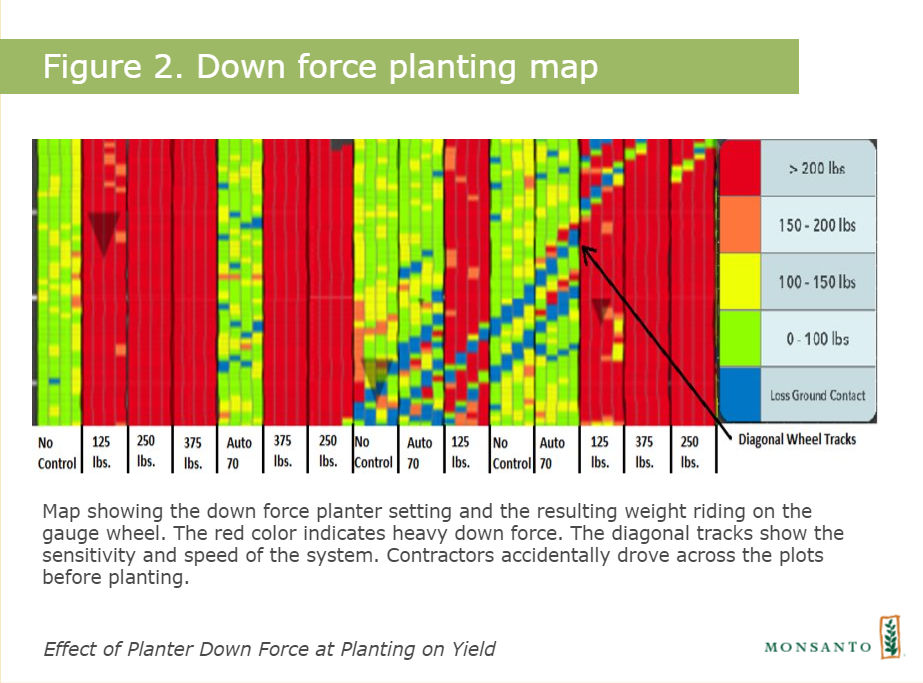3 MIN READ
Effect of Planter Down Force at Planting on Yield
December 20, 2015
Background
- Planting time is the last opportunity to alter the physical environment in the soil to provide optimal conditions for seed germination and early growth.
- For optimal conditions, seed should be placed at a uniform depth, with good seed-to-soil contact, and uniform seed spacing.1
- Consistent seed depth at planting is essential to achieve uniform seedling emergence.
- For example, in corn, it is ideal for seedlings to emerge within 24 hours of each other.
Firm soil limits penetration by the seed opener, which may make it difficult for the depth wheels to make solid contact with the ground surface. This situation may result in a more shallow planting depth.
Excessive down force can cause compaction zones and lower actual seeding depth as well as cause problems later in the growing season as roots attempt to grow into additional soil areas.2
Similar to planting in firm soils, if too much pressure is applied when planting in wet soils it can create compaction problems that will adversely impact root structure as the roots attempt to grow into the compacted soil.
It is essential to find the right balance of pressure to provide adequate seed-to-soil contact, but without causing over-compaction.3
If not enough down force is applied, then planting depth can be too shallow and seed-to-soil contact may not be adequate.
Finding the optimum down force to help provide the right soil conditions for seeds can be a challenge.
Planting conditions are typically less than ideal, which makes it even more difficult to provide ideal conditions for seeds.

Study Guidelines



Take Aways
Using appropriate amounts of down force at planting can improve yields compared to excessive down force.
The benefits of automatic down force systems would likely be more evident in fields where greater variability in soil physical properties are encountered at planting.
Sources
1 Karayel, D., and Šarauski̇s, E. 2011. Effect of downforce on the performance of no-till disc furrow openers for clay-loam and loamy soils. Agricultural Engineering Research Papers vol 43: no 3, 16–24. ISSN 1392-1134.
2 Gratton, J., Chen, Y., and Tessier, S. 2003. Design of a spring-loaded downforce system for a no-till seed opener. Canadian Biosystems Engineering vol 45: 229-235.
http://www.csbe-scgab.ca/docs/journal/
3 Hanna, H.M. 2009. Planter set-up and adjustments for accurate seeding of corn and soybean. Proceedings 2009 Indiana CCA Conference. https://www.agry.purdue.edu/
4 Salmon, R.W., and Dumbleton, A.J. 2006. The effect of seed treatment and depth of sowing on forage brassica crop establishment in no-tillage situations. Proceedings of the New Zealand Grassland Association vol 68: 211-214. http://eurekamag.com/research/014/241/014241856.php
Web sources verified 12/21/15. 151218061331
